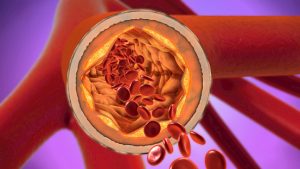
Significant constriction and stiffening can lead to problems such as angina, abnormal cardiac rhythms, and even heart attack and stroke. While there is no known cure for the disorder, lifestyle changes and medical intervention including surgery can help to reduce symptoms and prevent the disease from progressing.
A recent study at McGill University attempted to understand how this calcification occurs with the hope of finding a way of preventing it altogether.
The study was carried out under the leadership of Marta Cerruti in collaboration with Monzur Murshed (researcher at McGill University) and his trainees. Cerruti used Canadian Light Source tools to study the calcified arteries of laboratory mice, which had been genetically modified.
Findings of the study
There were two key findings of the research:
- A material called elastin is responsible for giving arteries their elasticity. It is this elasticity that helps arteries expand and contract while pumping blood in the heart.
- Collagen plays an important role in regulating mineralization in bones and teeth but does not cause mineralization of arteries.
The study was able to confirm that mineralization of teeth and bones worked differently than that of the arteries. While collagen was responsible for mineralization in bones and teeth, it played no role in arteriosclerosis. Therefore, arteriosclerosis has to be dealt with differently in terms of prevention and treatment
Researchers were also able to observe the presence of initial calcium phosphate deposits in the layers of arteries that contained elastin.
Scope for further research
A lack of understanding of the molecular mechanism has resulted in limited treatment options for the condition. However, this study has led to an understanding of what is and is not responsible (collagen) for the condition.
Researchers involved in the study believe that medical intervention at the time that calcium phosphate begins to crystallize on the walls of arteries can help to prevent calcification of arteries. If nucleation is stopped, arterial mineralization can be prevented.
Cerruti recommends that the findings be used in an interdisciplinary study to develop biomolecules as a treatment that can block this process and prevent crystal formation. This would help develop a drug that has the potential to treat arteriosclerosis.
Related: Atherosclerosis: Causes, symptoms, treatment, and lifestyle changes